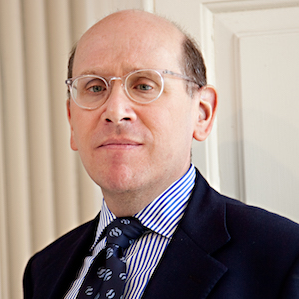
The LGBTQIA+ community has an important role in American history, but it hasn’t been well recognized. Donald Albrecht, curator of architecture and design at the Museum of the City of New York (MCNY), aims to rectify this by shining a light on the LGBTQIA+ community in New York with his lecture, “Gay Gotham,” named after his exhibition. This lecture was hosted in Lecture Center 102 at 7 p.m. on Nov. 1.
Donald Albrecht has had a long history with the MCNY. He has been working there for the past 15 years as the curator of architecture and design. He’s curated a wide range of shows on the rich culture of New York City, which includes the work of photographer Cecil Beaton, photographs from Look magazine and “Gilded New York.”
“Gay Gotham” actually originated from two shows Albrecht had done.
“I had just done a show on Cecil Beaton, and I noticed these gay networks in his career,” Albrecht said. “I had done an exhibition on the relationship between Paris and New York in the 1920s and ‘30s and I noticed these relationships there. I thought it might be interesting to do a show that focused on those networks.”
And so, “Gay Gotham” was born. With the collaboration of fellow curator Stephen Vider, the exhibit would catalog and peel back the hidden history of the LGBTQIA+ artist community in New York. The exhibit made its debut in 2016 at the MCNY and a companion book was released alongside it. Albrecht would later be asked by the Art History Association (AHA) to present his work at New Paltz in the form of a lecture.
“Albrecht was a great candidate for our event, due to his work at the MCNY,” said Jonathan Birns, the co-president of the AHA. “Our theme this year covers the role that cities played in the creation of art and how the art was influenced by the artists surroundings.”
The lecture itself ran for about an hour and Albrecht covered a broad scope of history within that time.
“Tonight I’m going to explore with you,” Albrecht said. “Specifically how New York over the last hundred and some years has been a beacon of lesbian, gay, bisexual and transgender artists. It was a safe haven for them in many ways throughout the 20th century.”
Albrecht made sure not to overwhelm the audience with information by dividing his lecture into three distinct parts. This division was determined by how prevalent the LGBTQIA+ community was at the time.
“We’re kind of talking in the teens and twenties; kind of out. In the thirties through the fifties; we’re talking really in the closet,” Albrecht said. “And finally, post-Stonewall, post-1969, after the riots… really out.”
Albrecht also selected prominent LGBTQIA+ artists to represent each era. For this lecture, he spoke about writer and painter Richard Bruce Nugent, composer and conductor Leonard Bernstein, and model and sculptor Greer Lankton.
Albrecht went through each of these periods chronologically, starting with Nugent and the New York he lived in. He noted how the community was incredibly open at the time, with the prominence of gay spaces in the city, like Turkish bathhouses and drag halls. Nugent’s work “unabashedly, openly explores the intersections of race, gender and same sex desire.”
“He was the king of intersectionality,” Albrecht said. “Way before that term was ever used.”
Albrecht covered Leonard Bernstein and his life in the ‘50s next. Bernstein rose to fame and popularity in New York for his skills as a composer and conductor, particularly for his work on “West Side Story” and “Candide.” Albrecht pointed out that “West Side Story” was coded for homosexual tolerance as well as racial tolerance, due to Bernstein living in a time when homosexual intolerance was at its height.
Finally, Albrecht talked about Greer Lankton, a post-Stonewall artist that created incredibly lifelike dolls, miniatures and was a model for several photographs by photographer Peter Hujar. Lankton was a trans woman, and her openness about herself and her art reflected this new found sense of freedom that the gay community fought for during and after the Stonewall riots.
Albrecht closed the lecture with a quote by Paul Rudnick in a New Yorker article in 1994.
“New York is a city of underdogs and loudmouths and people who just couldn’t stand their small town for one reason or another,” Albrecht said. “In a sense, even straight people come to New York just so they can be gay.”
Albrecht selected this quote in particular because it reflected how open the community had become in a hundred-year timespan.
“I enjoyed the lecture,” said Isabella Fitzgerald, fourth-year Women’s, Gender and Sexuality Studies major. “I thought it was very diverse, entertaining [and] told a history that was not often spoken of.”
Birns and art history Professor Keely Heuer also praised the lecture for its presentation of the LGBTQIA+ community in New York.
Albrecht’s main goal behind this lecture was to shed a light on the unknown history of the LGBTQIA+ community.
“[The goal] is to peel back the layers of history that many people don’t know exist,” Albrecht said. “I think young people now think being gay has always been something that’s been open, or you can be open. The goal was to show that it wasn’t always the case.”
